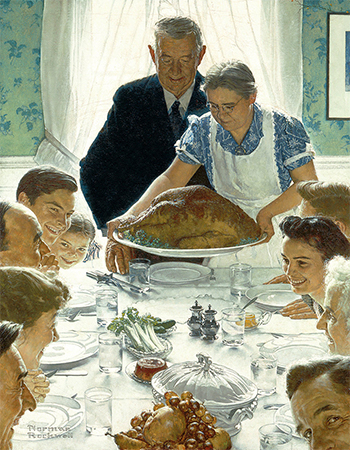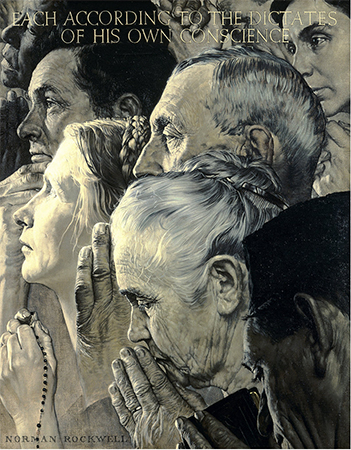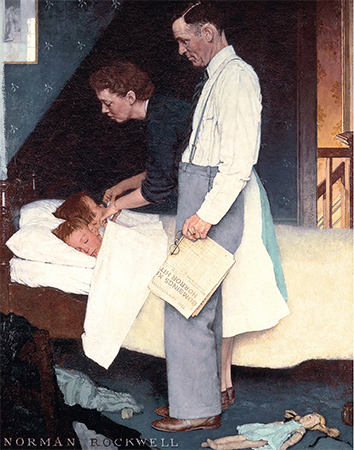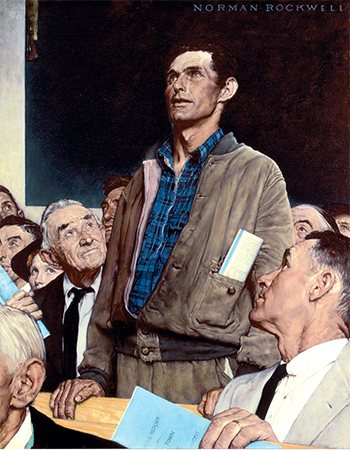The traveling exhibition dedicated to Norman Rockwell arrives at the Museum of Fine Arts in Huston. Launched by the New York historical society in June 2018, the show will be on display in Huston until March 22nd.
The images created by the American painter and illustrator constitute the very iconography of the American myth. In particular, his style embraces a strong photographic sense, which exacerbates reality by distorting it with irreverent – and sometimes grotesque – details.
Rockwell and the Saturday Evening Post
Norman Rockwell is a peculiar painter. He became famous for the representation of the American dream in the mid-twentieth century. His style, in particular, gained wide appreciation in the United States and greatly influenced generations of illustrators to come.

Freedom from Want, Norman Rockwell 
Freedom from Worship, Norman Rockwell
Rockwell was an extremely prolific artist. Between 1916 and 1963 he created 300 covers for the magazine “The Saturday Evening Post“. His illustrations, in particular, return a precious reconstruction of American popular culture of the last century.
“Without thinking too much about it in specific terms, I was showing America I knew and observed to others who might not have noticed. My fundamental purpose is to interpret the typical American. I am a storyteller.”
Norman Rockwell
Rockwell is acknowledged to have softened, in America’s perception of the time, the brutality of war through art. In fact, the artist devised a series of covers starring the recruit Willie Gillis. These are images describe the life of a young soldier from the first day in uniform until his return home.
The Four Freedoms of Norman Rockwell
The review collects the most incisive and famous works of the American painter. Among these, there are in fact the paintings inspired by Franklin D. Roosevelt’s speech on the state of the Union. Eleven months before the Japanese attack on Pearl Harbor and the entry of the USA into the war.

Freedom from Fear, Norman Rockwell 
Freedom of Speech, Norman Rockwell
In that famous speech, Roosevelt announced the civil reference objectives: Freedom of expression, Freedom of religion, Right to a dignified standard of living and Freedom from rest. Rockwell then brought to canvas what Roosevelt had expressed with his voice. The artist created a series of four paintings called “The Four Freedoms“. After the publication of the series on The Saturday Evening Post, the works quickly became iconic.
The American government made those already popular paintings posters that went into countless American homes.
Rockwell’s collaboration with “The Saturday Evening Post” lasted 47 years. Subsequently, the artist began to publish his works on “Look”. In this phase, Rockwell created works related to themes such as that of racial segregation, the war in Vietnam and the manifestations for civil rights in works such as “The problem we all live with“.
Rockwell’s illustrations, from the first phase to the more politically engaged works of the last period, offer a mirror of the beliefs of the time. According to the words of the art curator Eccher, “Rockwell constantly oscillates between a popular narrative, functional to an immediate emotional involvement, and a learned linguistic articulation that captures the scents of classical art, literature, a refined symbolism“.